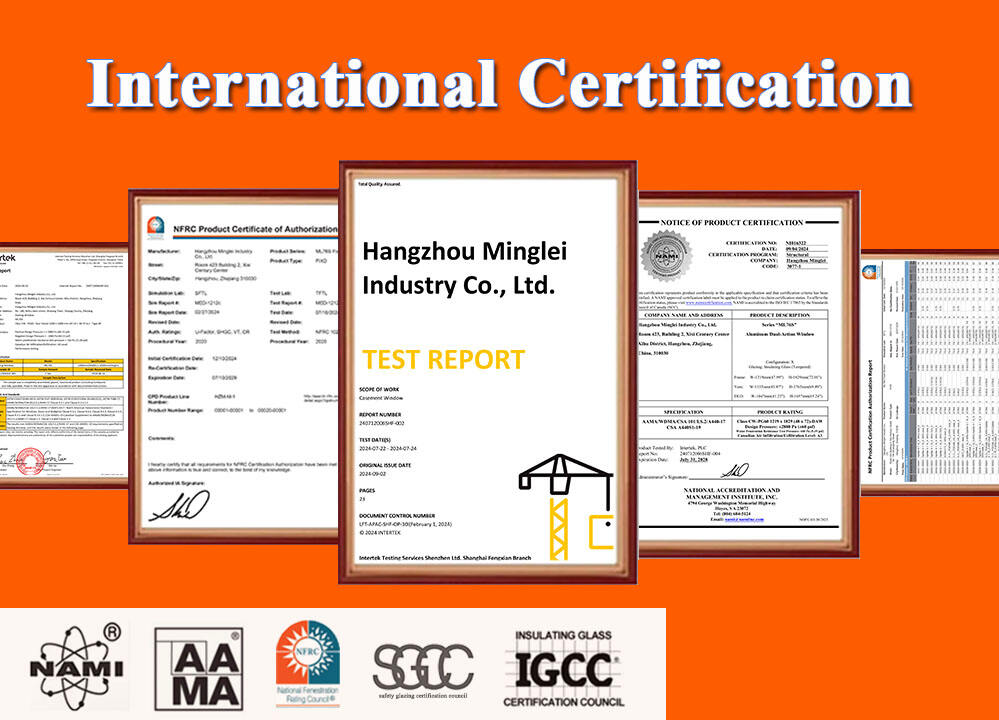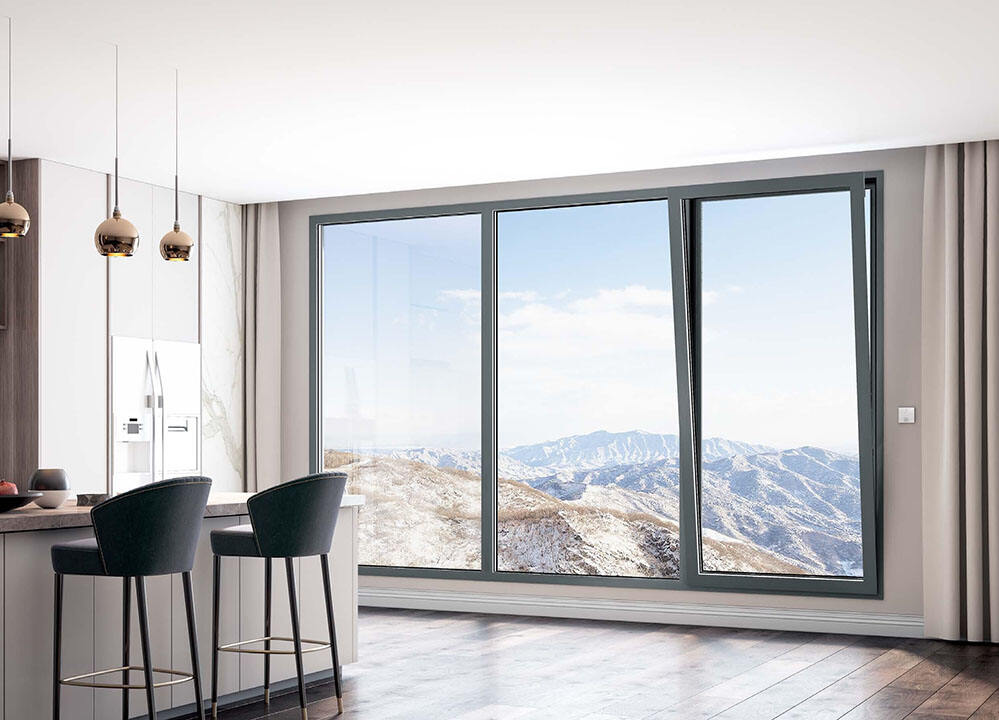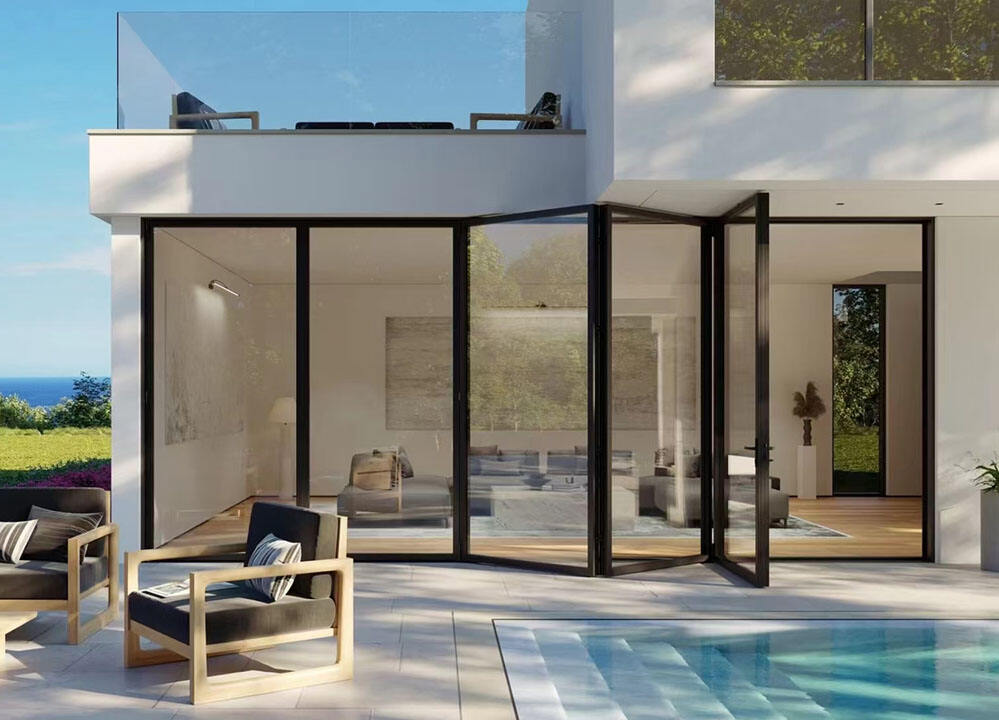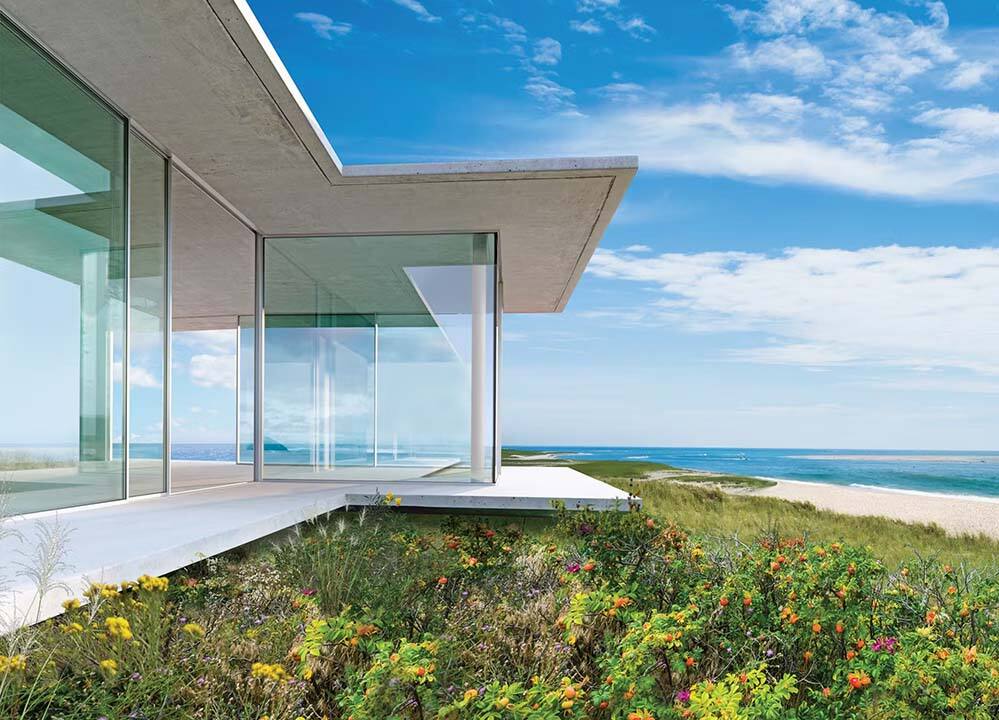TPS Glass: الحل العازل المتفوق للمنازل والمساحات التجارية في أمريكا الشمالية
في بيئة البناء المتغيرة باستمرار في أمريكا الشمالية، يستمر الطلب على مواد البناء عالية الأداء والفعالة من حيث استهلاك الطاقة في الارتفاع. ومع توجه أصحاب المنازل والأعمال نحو الاستدامة وتوفير التكاليف والراحة على مدار السنة، يبرز ابتكار واحد في صناعة الزجاج المعزول: زجاج TPS. وهو اختصار لـ Thermoplastic Spacer glass (زجاج بفاصل حراري بلاستيكي)، ويمثل تقدماً كبيراً مقارنة بوحدات الزجاج العازل التقليدية (IG)، حيث يوفر كفاءة حرارية ومتانة وفوائد بيئية لا مثيل لها. تم تصميم زجاج TPS ليكون فعالاً في مناطق أمريكا الشمالية ’ذات المناخات المتنوعة —من شتاء كيبك القارس إلى صيف فلوريدا الحارق —إنه يعيد تعريف ما يمكن أن تقدمه النوافذ والأبواب الحديثة، سواء كنت ’سواء كنت تقوم ببناء منزل جديد، أو تجديد عقار موجود، أو إقامة مبنى تجاري، فإن زجاج TPS يُعد استثمارًا ذكيًا يُحقق عوائد على مدى عقود.
ما هو زجاج TPS، وكيف يعمل؟
لفهم زجاج TPS، دعونا نبدأ بالأساسيات الخاصة بالزجاج العازل. تعتمد وحدات الزجاج العازل التقليدية على فواصل صلبة – تُصنع عادة من الألومنيوم أو الفولاذ أو الرغوة – لفصل لوحي زجاج أو ثلاثة، مما يُكوّن تجويفًا محكم الإغلاق يُملأ بغاز عازل (الأرجون أو الكريبتون أو الزينون). وعلى الرغم من أن هذه الفواصل تؤدي غرضها، إلا أنها غالبًا ما تعمل كجسور حرارية، حيث تسمح بانتقال الحرارة عبر إطار النافذة وتقلل بذلك من الكفاءة الكلية. ويُعالج زجاج TPS هذا العيب الجوهري بتصميم ثوري.
تستخدم زجاج TPS فاصلًا مرنًا مصنوعًا من مادة بلاستيكية حرارية (عادةً بولي إيزوبيوتيلين أو مركب مشابه)، ويُطبَّق هذا الفاصل كخيط مستمر حول محيط ألواح الزجاج. وعلى عكس الفواصل الصلبة، فإن فاصل TPS يتمدد ويتلاءم بإحكام مع سطح الزجاج، مما يُشكّل ختمًا محكمًا يقلل من تسرب الغاز ويمنع تكوين الجسر الحراري. كما يحتوي الفاصل على مادة مجففة تمتص أي رطوبة داخل التجويف، وبالتالي يمنع التكاثف أو الضباب أو نمو العفن، وهي مشكلات شائعة في وحدات الزجاج المعزول التقليدية.
النتيجة هي نظام عازل متكامل بالكامل، حيث يعمل الفاصل بتناغم مع ألواح الزجاج وغاز الحشوة لتكوين حاجز حراري متفوق. يمكن تكوين زجاج TPS بوحدات مزدوجة الألواح أو ثلاثية الألواح، مع طلاءات منخفضة الانبعاث (منخفضة الإشعاع) تُطبَّق لتحسين عكس الحرارة ونقل الضوء. يحقق هذا المزيج قيم U استثنائية (مقياس لفقدان الحرارة) ومعامل اكتساب الحرارة الشمسية (SHGC)، ما يجعله أحد أكثر حلول الزجاج كفاءة في السوق.
لماذا يتفوق زجاج TPS على الزجاج العازل التقليدي ?

عند مقارنته بوحدات الزجاج العازل التقليدية ذات الفواصل الألومنيومية أو الفوم، فإن زجاج TPS يقدم عدة مزايا رئيسية تجعله مثاليًا للأسواق في أمريكا الشمالية:
• كفاءة حرارية متفوقة: من خلال القضاء على الجسر الحراري، تقلل زجاج TPS فقدان الحرارة بنسبة تصل إلى 20٪ مقارنةً بالوحدات ذات الفواصل الألومنيومية. وهذا ينعكس في انخفاض تكاليف التدفئة في المناخات الباردة وتقليل احتياجات التبريد في المناطق الحارة. على سبيل المثال، يمكن لمنزل في شيكاغو مزود بنوافذ زجاجية من نوع TPS أن يوفر ما يصل إلى 30٪ من فواتير الطاقة السنوية مقارنةً بمنزل يستخدم نوافذ تقليدية.
• متانة محسّنة: الفاصل المرن من نوع TPS مقاوم لتقلبات درجات الحرارة والإشعاع فوق البنفسجي والرطوبة، مما يضمن أداءً طويل الأمد. وعلى عكس الفواصل الصلبة التي قد تنكسر أو تتدهور مع مرور الوقت، فإن فاصل TPS يحافظ على ختمه لمدة عقود. وتأتي معظم منتجات زجاج TPS مع ضمانات تبلغ 25 عامًا أو أكثر، وهي فترة تفوق بكثير الضمانات التقليدية البالغة 10 إلى 15 عامًا للوحدات العازلة (IG) التقليدية.
• عازل صوتي أفضل: إن الختم المحكم والتصميم المستمر لفاصل زجاج TPS يحسنان أيضًا من تقليل الضوضاء. سواء كنت تعاني من ضجيج المرور في المناطق الحضرية، أو الطائرات التي تحلق فوق رأسك، أو أصوات الحديث من الجيران، فإن زجاج TPS يحجب الأصوات غير المرغوب فيها بشكل أكثر فعالية مقارنة بالوحدات التقليدية. ويشكل هذا ميزة كبيرة للمنازل والمكاتب والمساحات التجارية التي تُعد الهدوء والسكينة أولوية قصوى فيها.
• مقاومة التكاثف: وبفضل الفاصل المعبأ بمادة مجففة والختم المحكم، فإن زجاج TPS يقضي عمليًا على تكوّن التكثيف على الجزء الداخلي للنوافذ. ويمنع هذا حدوث أضرار مائية في إطارات النوافذ والجدران والأرضيات، كما يحسن جودة الهواء الداخلي من خلال تقليل نمو العفن والعفونة.
زجاج TPS: مثالي لمواجهة التحديات المناخية في أمريكا الشمالية
تُعرف أمريكا الشمالية بتغيراتها المناخية الشديدة، مع درجات حرارة متطرفة ورطوبة عالية وأحوال جوية قاسية تختبر حدود مواد البناء. وقد تم تصميم زجاج TPS ليتعامل مع هذه التحديات بسهولة:
• المناخات الباردة: في مناطق مثل كندا وألاسكا والولايات الشمالية، يحافظ زجاج TPS ذو القيمة الحرارية المنخفضة (U-value) (تصل إلى 0.12 للوحدات ثلاثية الزجاج) على حرارة الداخل ومنع دخول الهواء البارد، مما يقلل الاعتماد على الأفران ومضخات الحرارة. كما أن غياب الجسر الحراري يمنع ظهور بقع باردة حول النوافذ، ما يحسن الراحة العامة.
• المناخات الحارة والرطبة: في الجنوب الشرقي والجنوب الغربي والمناطق الساحلية، يحجب زجاج TPS ذو معامل امتصاص الطاقة الشمسية المنخفض (SHGC) (يمكن أن يصل إلى 0.20) الحرارة الشمسية غير المرغوبة مع السماح بمرور الضوء الطبيعي. وهذا يقلل تكاليف تكييف الهواء ويمنع ارتفاع درجة حرارة المباني الداخلية، حتى خلال أشهر الصيف الشديدة. كما أن الختم المحكم يساعد في التحكم بالرطوبة الداخلية، ويمنع نمو العفن في البيئات الرطبة.
• الأحوال الجوية القاسية: إن البنية القوية لزجاج TPS تجعله مقاومًا للرياح والأمطار والبرد. كما أن الفاصل المرن يمتص الصدمات بشكل أفضل مقارنة بالبدائل الصلبة، مما يقلل من خطر كسر الزجاج أثناء العواصف. وتشكل هذه الميزة عنصرًا حاسمًا للمنازل والشركات الواقعة في المناطق المعرّضة لل tornados، ومناطق الأعاصير، والمناطق التي تتكرر فيها الظروف الجوية الشديدة.
الاستدامة: خيار أكثر اخضرارًا للمباني والمستهلكين المهتمين بالبيئة
لم تعد الاستدامة مسألة اهتمام ضيق بل أولوية قصوى لدى المستهلكين والجهات التنظيمية في أمريكا الشمالية. ويتماشى زجاج TPS مع هذا الاتجاه بعدة طرق:
• خفض استهلاك الطاقة: من خلال تقليل الحاجة إلى التدفئة وتكييف الهواء، يقلل زجاج TPS من البصمة الكربونية للمبنى. وتقدّر وكالة حماية البيئة الأمريكية (EPA) أن النوافذ الموفرة للطاقة يمكن أن تقلل انبعاثات الغازات الدفيئة من المنازل بما يصل إلى 1000 رطلاً سنويًا.
• المواد القابلة لإعادة التدوير: تُصنع الفواصل TPS من بوليمرات قابلة لإعادة التدوير، والزجاج نفسه قابل لإعادة التدوير بنسبة 100%. وهذا يقلل من النفايات في المكبات ويدعم الاقتصاد الدائري.
• الامتثال لمعايير البناء الخضراء: يستوفي زجاج TPS متطلبات الشهادات البيئية الكبرى مثل LEED وENERGY STAR وNRCan الكندية أو يتخطاها. بالنسبة للمقاولين الذين يسعون للحصول على هذه الشهادات، فإن زجاج TPS يُعد أصلًا قيمًا يمكنه المساهمة في اكتساب نقاط ضمن فئتي الكفاءة الطاقية والمواد.
مستقبل الزجاج قد أصبح واقعًا: اختر زجاج TPS
مع تزايد تبني أمريكا الشمالية لكفاءة الطاقة والاستدامة والراحة، فإن زجاج TPS أصبح على وشك أن يكون المعيار الذهبي في الزجاج العازل. إن تصميمه المبتكر وأداؤه الفائق ومتانته الطويلة الأمد يجعلانه خيارًا ذكيًا لأي شخص يسعى للاستثمار في مستقبل عقاره. سواء كنت مالك منزل تبحث عن تقليل فواتير الطاقة وتحسين راحة المسكن، أو مقاولًا تسعى إلى تمييز مشاريعك في سوق تنافسية، أو صاحب عمل يهدف إلى خفض التكاليف التشغيلية وتحسين راحة الموظفين، فإن زجاج TPS يحقق النتائج المرجوة على جميع الأصعدة.
لا تقبل بنوافذ قديمة وغير فعّالة تكلفك المال وتُضعف مستوى راحتك. قم بالترقية إلى زجاج TPS وجرّب الفرق الذي يمكن أن يحدثه تقني عزل متفوّق. مستقبل الزجاج قد حان—وهو حراري بلاستيكي.
 EN
EN
 AR
AR
 CS
CS
 DA
DA
 NL
NL
 FI
FI
 FR
FR
 DE
DE
 EL
EL
 HI
HI
 IT
IT
 JA
JA
 KO
KO
 PL
PL
 PT
PT
 RU
RU
 ES
ES
 SV
SV
 IW
IW
 ID
ID
 LV
LV
 LT
LT
 SR
SR
 SK
SK
 SL
SL
 UK
UK
 VI
VI
 ET
ET
 HU
HU
 MT
MT
 TH
TH
 TR
TR
 FA
FA
 MS
MS
 GA
GA
 HY
HY
 UR
UR
 BN
BN
 GU
GU
 TA
TA














